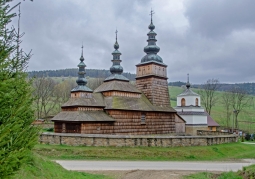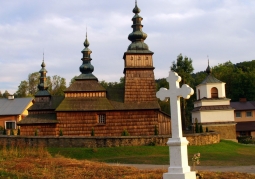Orthodox church of the Protection of the Holy Virgin - Owczary
No weather data
0.0 /5
Number of ratings: 0
Address: Owczary 58 , Owczary
The temple in Owczary was built in 1653. It was the second such structure in this place, the first one was destroyed under the influence of unstable soil. In 1701 the presbytery of the church was completely rebuilt, in 1783 a tower was added (works were done by masters Dimitr Dekowekin and Teodor Rusinka), and in 1870 the vestibule was widened to reach an equal width with the nave. In 1938 a polychrome was made inside. After the "Wisła" campaign, the church was taken over by the Roman Catholic parish, adapting it to the church, but keeping the call it carried. After the return of the displaced parts to the village after 1956, Greek Catholic services were occasionally celebrated in the building. In the years 1983-1985 a thorough renovation of the whole was carried out, including the restoration of the roofing with shingles. The Ministry of Culture and Arts awarded this renovation with a special distinction. In 1995 the church received the Europa Nostra Prize for the best kept historic building. Beginning in 1998, the temple is the joint seat of the Roman and Greek Catholic parishes. In June 2013, after intensive efforts, the church was inscribed on the UNESCO World Heritage List along with 15 other similar objects in Poland and Ukraine. The magnificent church is of the Lemko type, it is tripartite, with a tower of pole-frame construction above the vestibule. The presbytery and nave, after rebuilding, are of the same width. Roofs shingle roofs over three parts of the temple crowned with '' helmets '' and crosses. Originally rectangular windows were only in the south wall of the church, because the northern part was identified with the devil's forces. Due to the need for protection against moisture, the church was built on a foundation of grubbed up tree trunks.
Komentarze
No results
Nearby places
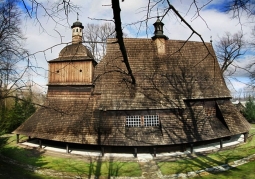
Church St. Filip and Jakub - Sękowa
Category: ChurchesThe affiliate church. St. Filip and Jakub in Sękowa is one of the most valuable churches located on the Wooden Architecture Trail of Lesser Poland, the Low Beskids area. It was built in 1520 from hand-hewn larch trees....
4 km
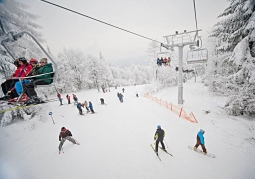
Magura Ski Park - Małastów
Category: Ski resortsThe existing slope is located in the south of Poland in Małastów, on the slope of Magura Małastowska. Descent from the summit of Magura Małastowska (813m above sea level). 4-seater chairlift with a capacity of 2200...
6 km
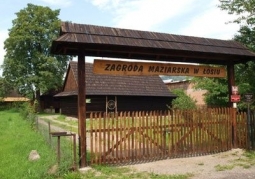
Maziarian farmstead - Łosie
Category: Open-air museumsThe ethnographic museum, a branch of the Karwacjanów and Gładyszów Manor Museum in Gorlice, located in the village of Łosie, presents the history of maziaria, i.e. trade in oil and grease, which inhabitants of this...
8 km
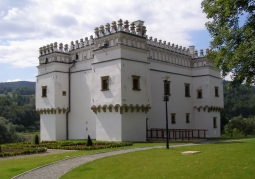
Gładyszów fortified manor house - Szymbark
Category: Manor housesThe manor in Szymbark built around 1540, located in the town of Szymbark in the Gorlice poviat. This is the best example of a fortified castle in Poland. Former seat of the Gładyszów family. It is a very valuable...
8 km
Nearby places

Church St. Filip and Jakub - Sękowa
Category: ChurchesThe affiliate church. St. Filip and Jakub in Sękowa is one of the most valuable churches located on the Wooden Architecture Trail of Lesser Poland, the Low Beskids area. It was built in 1520 from hand-hewn larch trees....
4 km

Magura Ski Park - Małastów
Category: Ski resortsThe existing slope is located in the south of Poland in Małastów, on the slope of Magura Małastowska. Descent from the summit of Magura Małastowska (813m above sea level). 4-seater chairlift with a capacity of 2200...
6 km

Maziarian farmstead - Łosie
Category: Open-air museumsThe ethnographic museum, a branch of the Karwacjanów and Gładyszów Manor Museum in Gorlice, located in the village of Łosie, presents the history of maziaria, i.e. trade in oil and grease, which inhabitants of this...
8 km

Gładyszów fortified manor house - Szymbark
Category: Manor housesThe manor in Szymbark built around 1540, located in the town of Szymbark in the Gorlice poviat. This is the best example of a fortified castle in Poland. Former seat of the Gładyszów family. It is a very valuable...
8 km

